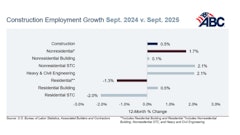
Let’s assume you have a stack of job applications on your desk. If you did your job correctly, those applicants should, for the most part, have the qualifications, skill sets and personalities you are looking to hire.
In other words, your advertising and marketing skills culled out the deadbeat, unqualified, miserable yahoos who have taken up way too much of your time in the past. You now have a pool of great potential employees that you are excited to move on to Phase 2 of your hiring process. It’s time to put on your Sherlock Holmes hat and start looking for clues as to which of the remaining candidates are the best of the best. You must be detailed, committed and ruthless. Only a small percentage of those candidates are truly a great fit for your organization.
There are some red flags to look for when reviewing an application or resume. The following should be reasons to seriously consider removing a candidate from your search:
1. They leave questions or sections blank: Leaving fields blank on an application could point to several things. The candidate might only be marginally interested in the position. They may not have the answers you are looking for (e.g. they have a lack of knowledge about the skillsets necessary for the job). They may have the answer but are unwilling to share it or are trying to hide something. Decide whether to remove them as a candidate based on their entire application and their resume/cover letter.
***An attached resume is a perfectly valid explanation for leaving questions or entire sections blank. If the information you requested is included in their resume, please don’t require (or even expect) them to reproduce it on the application.
2. They do not possess the skill sets or work experience required: In some cases, you may be willing to train the right candidate if they possess other desirable traits, but in general, you are better off looking for a more well-rounded prospect.
3. Their availability/schedule is inflexible or limited: Contracting jobs are rarely 8 a.m.-5 p.m., Monday through Friday. Weather, customer requests, job completion deadlines and other factors regularly impact the flow of work. This often requires crews to work at odd hours to complete tasks. Employees with fixed or limited schedules can really throw a wrench into your scheduling.
4. Their pay expectations are significantly higher than what you are prepared to offer: Though it is often possible to negotiate with a candidate that is a perfect fit for the position you are attempting to fill, he or she needs to have pay expectations that are close to what you can justify. If the gap is just too big it makes sense to disqualify the candidate.
5. Their length of employment at previous jobs was typically short: I once had a management candidate that listed five jobs over a 14-month period on their application. Hopping from job to job is usually a sure sign that the trend will continue if you hire them. These folks will skip off to the next opportunity for almost any reason.
6. They are overqualified for the position: In a tight labor market, applicants will often apply for jobs they are overqualified for. This can seem like a boon for you since you’ll probably have to pay less than usual to onboard that kind of talent and expertise. However, there are some things to consider before leaping at these kinds of opportunities. Most importantly, keep in mind that when an overqualified employee is offered a better paying job that fits his or her qualifications, they are more than likely to leave, no matter how long or short of a time they have spent at your company. Losing a good employee will always disrupt the flow of your company. Also, ask yourself why they are applying for a job that is below their pay and qualification level. Is it just due to a tight labor pool? Or is it that they have some hidden issues that have kept them from moving up the ladder elsewhere? Asking some probing questions can help you get to the bottom of the issue.
7. They fail to follow directions or pay attention to details: When crafting your custom application, be sure to include a few sections that require the applicant to read and follow directions. This could be as simple as signing and dating a paragraph or checking boxes to signify skillsets they possess. Failure to follow directions or miss details on an application gives you insight into what it could be like to work with that applicant.
8. When contacted, past employers will only say that the candidate is “not eligible for rehire”: Back in the day, past employers would tell you exactly what you wanted to know about their ex-employees. But in the litigious world we live in today they are afraid to say anything for fear of being sued. So if you reach out to a past employer of a candidate and all you hear is “not eligible for rehire,” that’s their way of saying, “There’s no way in hell I’d hire that loser again and you’d be better off if you didn’t either.”
When evaluating applications and resumes it is just as important to cull out candidates as it is to find potential winners. The final step in prescreening is phone interviews and you don’t want to waste time on anyone that isn’t a potential employee.



















